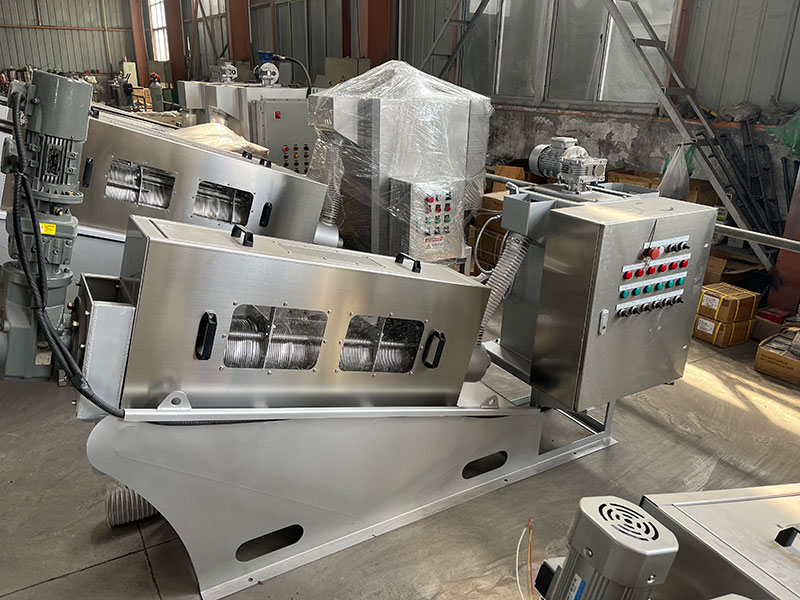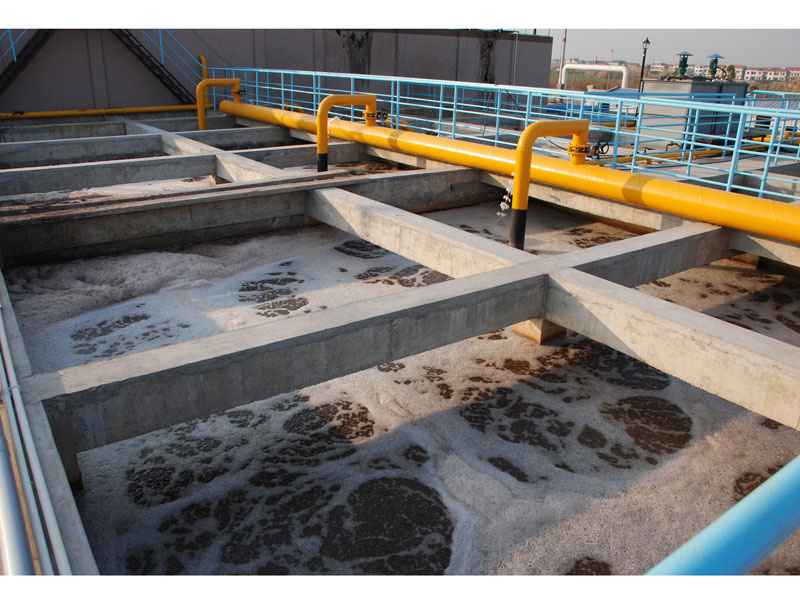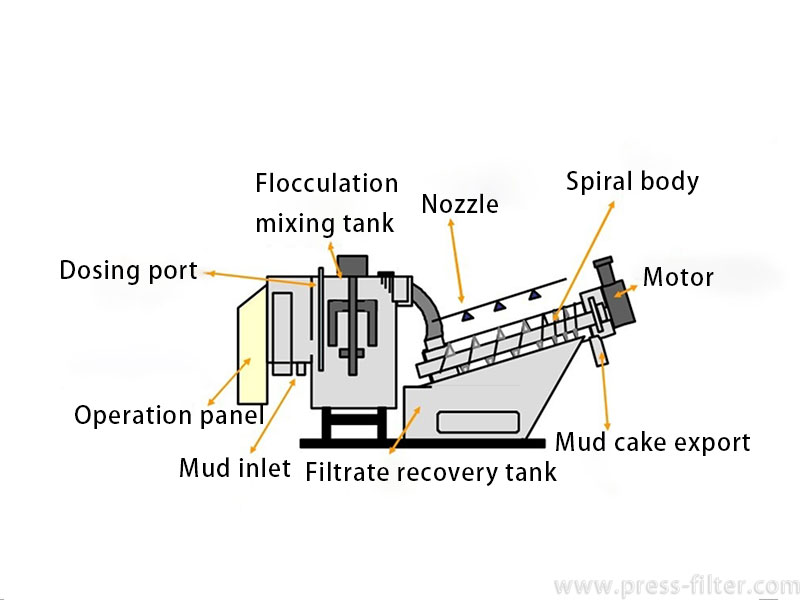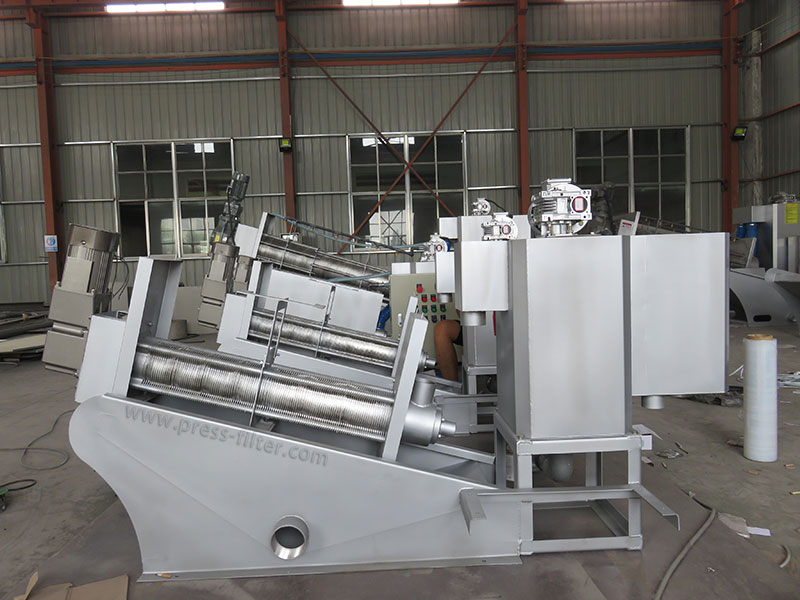Application of Screw Press in Medical Sludge Dehydration
Medical sludge is sludge produced during hospital sewage treatment and septic tank sludge. In the hospital sewage treatment process, more than 80% of pathogens and more than 90% of parasite eggs flow into the sewage treatment system due to incomplete treatment, becoming the main component of sludge. Because hospitals use a large amount of antibiotics and disinfectants, some bacteria in the sludge have become resistant to antibiotics. Therefore, some pathogenic microorganisms can survive in the external environment for a long time. If the medical sludge cannot be properly treated, it will cause great harm to the environment. Hidden danger. This article will introduce the application of screw press in medical sludge dehydration.
Current Status of Medical Wastewater Treatment
At present, the phenomenon of “heavy water but light mud” is common in the field of medical wastewater treatment. Due to insufficient attention being paid to medical sludge disposal and the high cost of domestic hazardous waste treatment and disposal, most medical sludge cannot be properly disposed of. Medical institutions usually discharge medical sludge directly into septic tanks and then transport it out of the country. Some medical institutions even secretly discharge sludge into urban sewers at will. Since medical institutions are numerous and scattered, with varying sizes, it is difficult to standardize their treatment through centralized treatment. The cost of sludge disposal usually accounts for 26% to 36% of the cost of medical wastewater treatment. By reducing the moisture content, sludge disposal and transportation costs can be effectively reduced. Therefore, it is particularly important to seek medical sludge dehydration technology and equipment with high dehydration efficiency, good sealing effect, and low operating cost.
How Does the Screw Press Work?
The screw press mainly relies on the spiral to push the multiple fixed rings, and the traveling ring stacks around the shaft to move relative to each other. Under the action of gravity, water is filtered out from the gaps between the traveling ring stacks, and the concentrated sludge is continuously pressed through the rotation of the spiral shaft. It is pushed forward by the swimming ring and finally moves towards the discharge port. As the spiral shaft’s pitch decreases gradually, so does the gap between the fixed ring and the moving ring, causing the volume of the spiral cavity to shrink continuously. As a result of the back pressure plate’s effect at the outlet, internal pressure gradually rises, facilitating the discharge of moisture from the sludge. Consequently, the moisture content of the mud cake decreases steadily until sludge dehydration is achieved.
The screw press is suitable for a wide range of mud feeding, has a closed modular design, is easy to install and disassemble, has the characteristics of no clogging of the screw shaft, and has a high degree of automation. In addition, the equipment has strong operation stability, low operation and maintenance costs, no odor, and no noise, and is especially suitable for medical sludge dehydration in decentralized medical institutions.
Dehydration Process of Screw Press
Medical sludge is pumped into the screw press by a large-diameter vacuum sludge pump and first enters a simple grille. The simple grille can remove most of the large solids and a large amount of fiber in the medical sewage; the medical sludge is processed by the grille. The mud then enters the material box. After the sludge continuously fills the first inner cavity of the material box, it enters the second inner chamber of the material box and then flows directly into the high-efficiency tube trough coagulator from the second inner chamber; at the same time, The PAM agent solution prepared by the polymer soaking machine is transported into the high-efficiency tube coagulator by the dosing metering pump; the PAM agent solution and fecal sewage are fully mixed, and the sludge flocculates to form flocs and then enters the dehydration body to start dehydration. After treatment and solid-liquid separation, the filtrate is discharged from the filtrate tank discharge port, and the mud cake is discharged from the mud discharge port.
Factors Affecting Filtering Effectiveness
Screw speed: The speed of the screw shaft affects the sludge propulsion speed and shear force, which in turn affects the dehydration efficiency and water quality.
Pressure: The greater the pressure applied in the sludge treatment area, the better the dewatering effect is usually. However, excessive pressure can cause excessive wear on equipment.
Flocculant dosage and type: Appropriate flocculant can improve the flocculation effect of sludge particles, making it easier to dewater. The type and amount of flocculant added need to be adjusted according to the characteristics of the sludge.
Temperature: Ambient temperature may affect the chemical reaction rate and microbial activity during sludge dewatering, thereby affecting dehydration efficiency.
Conclusion
The screw press integrates dehydration, automatic dispensing, sludge feeding, and transportation. It has the characteristics of high dehydration efficiency, good sealing, small footprint, on-site operation, movable and simple operation, and a high degree of automation. It is suitable for decentralized Front-end dehydration treatment of medical sludge in medical institutions.





